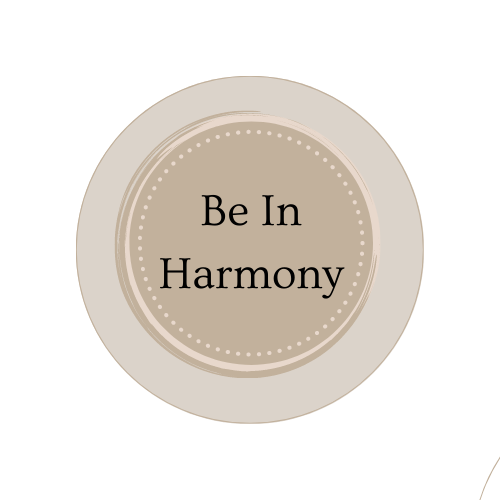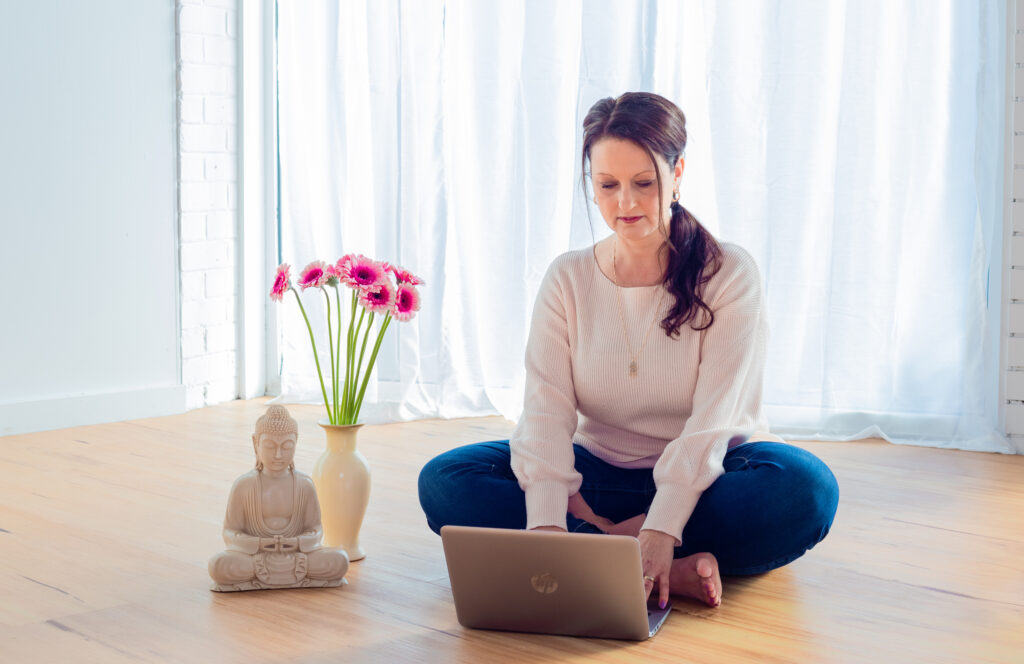
by tanyafrancois | Feb 23, 2021 | Mental Health
Many of us struggle with self-compassion. I personally view myself as a compassionate person, but self-compassion is something I have struggled with, in my own life. I’ve had to learn the skills of how to be kind and compassionate towards myself.
Self-compassion takes practise, patience and perseverance, to perfect your skills. Once you master the skill of self-compassion, you unveil a beautiful masterpiece within yourself
So how do we start creating our masterpiece within ourselves?
As I mentioned, many of us view ourselves as compassionate people. It’s easier to treat others with compassion, kindness and warmth. However, many of us can struggle to treat ourselves with the same compassion.
What is self-compassion?
Self-compassion is a mindfulness technique. It is the ability to acknowledge your own, thought, feelings and responses with understanding acceptance and kindness towards yourself
In other words, treating yourself the same way you would treat a good friend who is experiencing painful emotions. Think about how you would treat that friend. I am sure you would be warm, caring, kind and compassionate, towards them.
However, if you were in the same emotional pain. Could you extend the same compassion and love towards yourself? Are you able to acknowledge your plain and hold yourself in a kind, caring, warm, and compassionate way?
It is not always easy to show ourselves compassion. When we are in pain, we offend treat ourselves with harshness unkind word, judging and criticizing ourselves. The inner critic’s loves to show up when we make a mistake, fail at something or feel stressed and overwhelmed.
When the inner critic overwhelms us with judgement, harsh words, and negativity, it is easy to miss the point of self-compassion. We invalidate our emotions by telling ourselves: We should not feel this way. We should not have these thoughts. Our mind tells us we should not act like this. We call ourselves unkind names. We repeated the “I am not good enough” story over and over again.
Does it sound familiar to you? We can be so harsh and critical of ourselves. Invalidating our experiences, thoughts, feeling and emotions. When we are overcome by difficult thoughts or feelings. This is the perfect time to learn how to show ourselves more self-compassion.
Many of us have little or no experience with self-compassion. Often when we told about self-companion, we find it threatening self-indigent or overwhelming.
The fact is that self-compassion has so many positive effects on every aspect of our lives.
Over the last decade, research has consistently shown a positive correlation between self-compassion and well-being
That including:
- Boost to happiness
- Improved self-imagine
- Self-worth
- Resilience
- Reduce stress
- Improved mental health
How do we start taking the steps to develop self-compassion?
The concept of self-compassion may feel unfamiliar and uncomfortable at first. If you are embarking on this self-compassion journey for the first time. Start by building self-compassion through small steps.
Do not allow yourself to be threatened and overwhelmed by the inner critic telling you it’s too hard.
Stop and reflect for a moment: “We have been criticizing ourselves for years and it has not worked. Let’s try something different. Try showing yourself approve, compassion and kindness and see what happens”
Take your time and be gentle with yourself. Here are some tips to get you started with self-compassion.
Understanding the relationship with the Inner critic.
Most of us are familiar with the inner critic. That voice in our mind is quick to judge and citizen us. The inner critic seems to enjoy the opportunity to highlight our mistakes, flaws, and failures.
Making us feel that we cannot measure up to the expectation, we place on ourselves. We replay the “never good enough” story on repeat in our mind. The relationship we have with our inner critic gives us the opportunity to start taking the first steps to developing self-compassion. We can learn how to release the “I’m not good enough story”, self-judgment and harsh words of the inner critic.
This is one of the most important steps towards self-compassion.
The first step is we need to become aware of the stories we tell ourselves. We can do this by, noticing and naming the story our inner critic is telling us. Then we can teach start ourselves how to disengage from the inner critic.
We do this by seeing the inner critics as nothing more than words and pictures, our mind is showing us. We do not need to get into a discussion with ourselves about whether it’s true or false. We can show ourselves self-compassion. By letting the thoughts and pictures of the inner critic come and go in their own time. We do not need to be pushed around by the inner critic. We can show ourselves kindness and compassion in the storm of the inner critic by:
Talk to ourselves in a caring gentle and understanding way.
Try this: Notice and Name the Story
- This week start to notice the story you tell yourself.
- You may want to write down the words you say to yourself.
- The next step- is to name the story eg, (There is the “I’m not good enough story).
- By giving the story a name, it gives you more power. Realising it’s a story, it does not mean it is true or false. It’s only words and you can choose how much power you give those words.
- Let go of the story if it is unkind.
- Put your hand on your heart. Take some deep breaths. Release the words and show yourself kindness and compassion.
Only through practice and patience, do we become better at showing ourselves compassion. Next time the inner critic shows up and starts judgement and using harsh words. Take a moment pause and notice and name the story. Remember self-compassion is showing yourself the same kindness you would show a friend or loved one in pain. You are worthy of love, you are worthy of kindness, and most of all you are worthy of self-compassion. Start mastering the skill of self-compassion and unveil that beautiful masterpiece that is within you.
Are you ready to start taking the first steps to show yourself self-compassion?
I would love to hear how you feel about this topic and how you are bringing more self-compassion into your life. Please comment and share your experience
Do you feel inspired to start your journey of self-compassion? Please click here for more information about how I can help you with self-compassion. It is one of my favourite things to teach. If you have any questions please feel free to get in touch

by tanyafrancois | Nov 2, 2018 | Uncategorized
Developing a sense of connection to ourselves is about having a stronger sense of awareness of who we truly are. Our unique strengths, gifts, and ideas. It means going within and not looking outside of ourselves to fill the sense of connection. Often we look to the outer word to fill the void we are feeling within.
We are so busy, distracted, stressed, overwhelmed. We connected to our phones, our email, social media. We are living in a world of information overload. We are looking externally for connection and validation. The external ways of connection are getting stronger and stronger. It can be easy in these times to feel a loss of connection to ourselves.
Take a moment to disconnect from the busy world around you. Stop to ask yourself to do you feel connected to yourself. Do you go within to connect to who you truly are?
If you feel an urge to reconnect with yourself read on! I got five practices for you to get you back on track and feeling more connected to yourself.
Connect with you
A simple practice to use to reconnect with yourself:
Place your hands and your heart and take a few deep breaths.
Close your eyes and go within.
Come back into balance with you. Feel yourself in your body.
Feel the connection with your mind and spirit.
Allow yourself to breathe for a moment.
Reconnect with yourself relax and allow yourself to have this moment of connection to you.
Ask yourself:
What I am feeling at this moment? Just noticing as you become aware of how you feel in the moment.
Asking How does my body feel at this moment? Again, just noticing the body at the moment.
Take some time to breathe and connect with yourself, your soul, and the deep sense of yourself.
Connect with your mind
Becoming aware of your thoughts is a powerful way to reconnect with your mind.
Are you filling your mind with useless thoughts that get you nowhere? Become aware of the thoughts that are going through your head.
Connect and listen to the constant chatter of the mind.
Lately, I have been setting a reminder in my phone to check in with my thoughts 3 times a day. I have become more aware of the useless through that were going through my mind. Once I connected with my mind and become more aware of my thoughts it’s easier to start replacing the thought with more useful ones.
Try it for yourself.
Put a reminder on your phone to connect with your thoughts 3 times a day.
Just listen and be aware of what you are saying to yourself.
Then start replacing the negative thought with a more positive thought.
I love to replace my negative thought with complete opposite positive thoughts.
Connect with your feelings.
It’s easy in our busy lives to push our feelings aside and not be aware of our true feeling. We distract ourselves with the external that often we can forget to check in and feel what is going on inside of us.
To connect with your feeling try this.
Find a quiet place to take some time for yourself.
Become aware of your feelings. Connect with how you truly feel.
Allow yourself to feel and be aware of what you are feeling.
Notice where you feel the feeling in your body. Notice how it feels in your body.
What emotions are you feeling?
Connect with all the aspects of how you feel. Go within and feel what you need to feel.
Now breathe deeply and allow yourself to release and let go.
Allow your body to release the feeling through the breath.
Allow the breath to calm the emotions.
Allow the mind to become clear with the breath.
Just keep breathing deeply until you become aware of the feeling moving through the body and releasing.
Connect with the breath.
Connecting with the breath is a powerful way of reconnecting with yourself, it’s your life force.
Try this simple practice to connect with the breath.
Place your hand on your abdomen.
Start by observing your breath as you feel your belly rise and fall.
Breathe deeply – drawing in energy in through your navel.
Feel your abdomen expand and contract as your breath.
Feel your chest rise and fall.
Continue to breathe slowly and deeply. Paying attention to your breath.
How does the breath feel?
Allow yourself to breathe deeply to connect with the breath- your life force.
Breath and feel the connection.
Write about it.
Journaling is a powerful way to connect with your inner self. Journaling allows you to connect to your inner thoughts and feelings.
Take out your favourite journal, notebook or a blank piece of paper.
Find a quiet place and give yourself some time to go within to connect with yourself.
Ask yourself what I need to know.
Free write
Try not to edit or overthink.
Allow the words to flow out of you and onto the page.
If you can’t find the words, try drawing. You don’t have to be an artist. No judgement!! Just allows what needs to flow on to the paper to come out.
Enjoy this time to connect with your inner being.
A beautiful reminder about connecting to finish with
“Disconnect to reconnect”.
Let’s try to disconnect from the external world occasional so we can reconnect with ourselves.
I hope this served you and helped you bring more harmony into your life.
I have recorded a special gift for you on my resource page.
You can download you’re a free guide to practice that will help you reconnect with yourself. Reconnect with yourself





